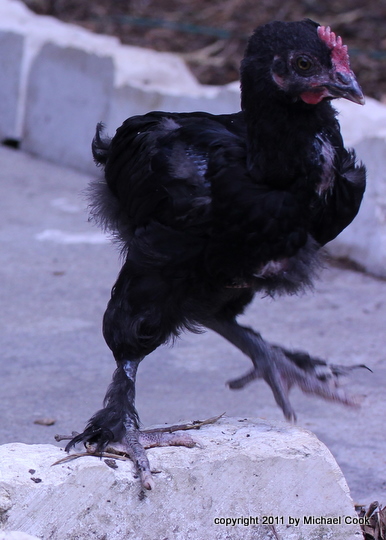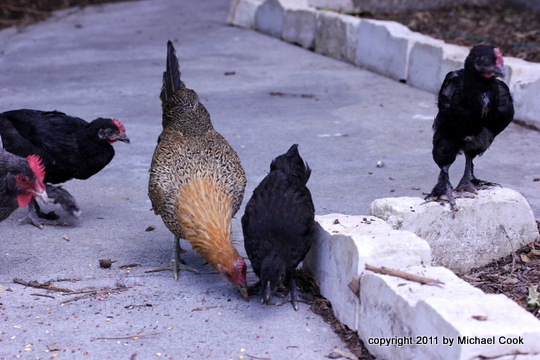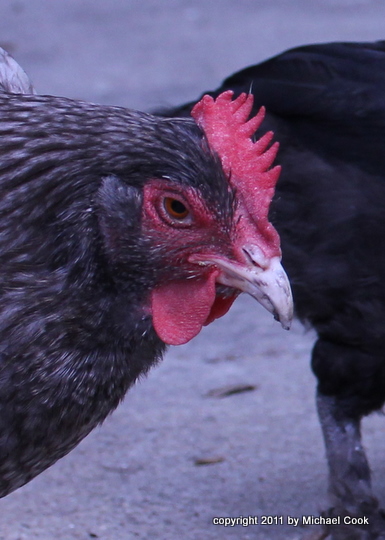Teenage Chickens
The chickens are growing up fast! They’re eight weeks old today. They will spend long periods of time some distance from their momma, although they still tend to hang out with her when the other hens are around, and she’s still feeding them and gathering them up into the coop at night.
We’ve quite definitely got three pullets (young hens) and two cockerels (young roosters) – this time around, the differences were clear quite young, and have become more pronounced as they grow.
One of the pullets. This one has a little more of the copper on her back than she really should have, but I think she’s going to grow up to be a lovely hen.
One of the cockerels. This one is more than a little on the gangly-and-awkward side; hopefully he will eventually grow into the length of his legs, and stop being such a momma’s boy. We call him Urkel.
Another family grouping, with a photo-bomb from Ginger.
I *love* Ginger’s expression. She always has this look in her eye. Ginger takes no crap from anybody.






Hi! My name is Cristina and I just stumbled upon your blog while searching for answers about my luna moth. I have a luna moth (his name is albert) and I got him when he was already in his 3rd instar. Problem is, he will not come out of his cocoon. He’s been in there for about a month. He’s not dead either, every time I go poke him he moves around furiously. He’s in a cardboard box and he did not make a “normal” cocoon, he made a hard silk cocoon (no leaves or dirt or anything like that) I’m afraid he’s stuck in there but I don’t want to force him out if he isn’t ready. What should I do?
Christina,
Unfortunately, some times they just take their time. As long as it’s moving around, it’s probably going to come out this season, but it could be soon or it could be another month or more. They stagger their emergence in our climate (at least, where I am in Texas!), to ensure that they have the best chances of survival. In colder climates, they are much more synchronized. Make sure that the cocoon is not in direct sunlight, but can see daylight – it makes some of its emergence decisions based on the daylight cycle. You might also try misting or dipping the cocoon in water.
Thank you for the info! I was starting to worry that my little caterpillar was never going to come out of his cocoon. I’ll make sure to move him near the window and give him a nice mist.
Hello there,
I stumbled across your blog while doing research on starting my own silkmoth project. Just wanted to say that your blog is a wonderful read and I’ve had a blast reading about your experiences! I live in Metro Atlanta and I too am a gardener, a beekeeper, a silkmoth-keeper and soon plan on building a chicken coop and keeping some chickens. I’ve got Actias luna larvae in their third instar right now and it’s been an amazing time so far raising them. Thanks to your site, I’ve had images to compare my guys’ growth to and it’s been a huge help!
Keep up the great posts!
Best regards,
Jess